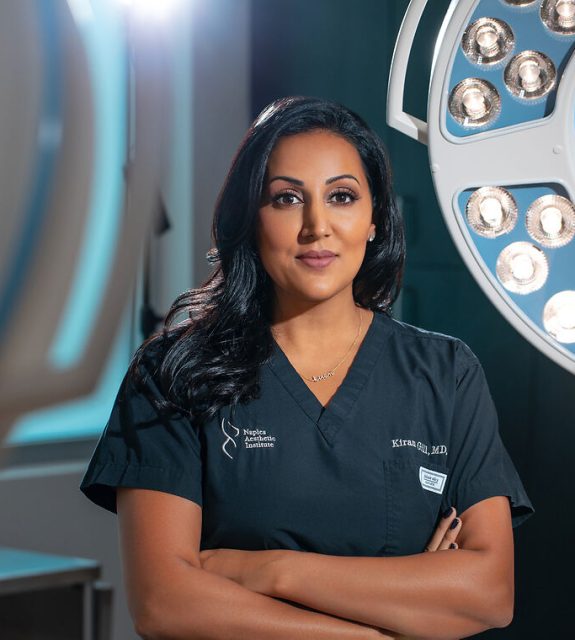Dr. Navin S. Arora is associated with a variety of prestigious dermatologic organizations to include the American Academy of Dermatology, The American Board of Dermatology, the American Society for Dermatology Surgery. Each is a premier organizations that form the cornerstone of dermatology. Here, the renowned doctor dishes on exactly how PRP can help with hair loss, the benefits of the treatment and more.

What is PRP and how is it used for hair loss?
Androgenetic alopecia is still one of the most common causes of hair loss and no permanent treatment has been found for it yet. Since this type of hair loss is due to the shortening of the hair follicle growth phase.
Platelet-rich plasma (PRP) is created through concentrating platelets found in blood. PRP has been shown to aid in tissue regeneration, bone regeneration, and wound repair. PRP has also been shown to promote hair growth.
The rationale involving PRP and hair loss is associated with its concentrated number of growth factors that stimulate hair regrowth.
How long does PRP last for hair loss?
Hair loss has an important impact on patient quality of life. Therefore, many patients are seeking medical advice to stop their hair loss progression. Unfortunately, hair loss is a progressive process as we age. Some individuals are affected at an earlier age than others. PRP helps an individual to retain their current hair and hopefully regrow hairs that have fallen out. Essentially, it helps to delay and minimize another sign of aging, as do botox and dermal fillers.
What is the PRP Process?
To date, there is no standardized protocol. Therefore, the process may vary per location. Generally, the patients’ blood is drawn from a superficial arm vein and filled into a special PRP vial. Then, the tube is spun in a centrifuge. After centrifuging, a platelet-rich layer is produced. This platelet-rich layer is isolated and injected into the scalp, that has evidence of hair thinning.
How much does the procedure cost?
There are several variables in the cost of the procedure. This can include the size of the PRP vials utilized, number of treatments purchased and of course your location- urban vs. rural. I have seen prices range from $700 to $1500 per single treatment.
Can PRP stop hair loss completely?
We do not have any treatments to stop hair loss indefinitely. It is important to realize that hair loss is a progressive process as we age, just as facial volume loss, bone thinning, just to name a few. However, we do have effective treatments to slow or stop hair loss and even re-grow hair- with continuous treatment.
Except for the scalp surgery, which is an invasive procedure, finasteride and minoxidil are the mainstays of treatment. These treatments are typically used in conjunction with PRP. There are also several over the counter or physician-only dispensed hair supplements that can be synergistically used.
Walk me through the consultation process of determining the patient needs PRP treatment
The main goal of the consultation is to identify any underlying cause for hair loss, such as thyroid dysfunction or scalp inflammatory disease. If these conditions are present, PRP will not be helpful, as treatment of the underlying condition is warranted first. Next, the degree of hair loss is graded. The ideal candidate is one who does not have too much hair loss or too little hair loss. There are several other clinical measures, however, these are the main factors in determining the appropriate candidate.
How soon can patients expect to see results?
Results can take three to six months. First, the hair follicle must move into the growing phase and then it can start to grow the hair shaft. Patience is the key when it comes to hair loss treatment!
What are the benefits of PRP?
Studies have shown that PRP can promote hair growth, encourage cell survival and proliferation, and prolong the anagen phase of the hair cycle. Basically, it has shown to give thicker, fuller hair!
For more information, visit Dr. Navin S. Arora's social media:





















